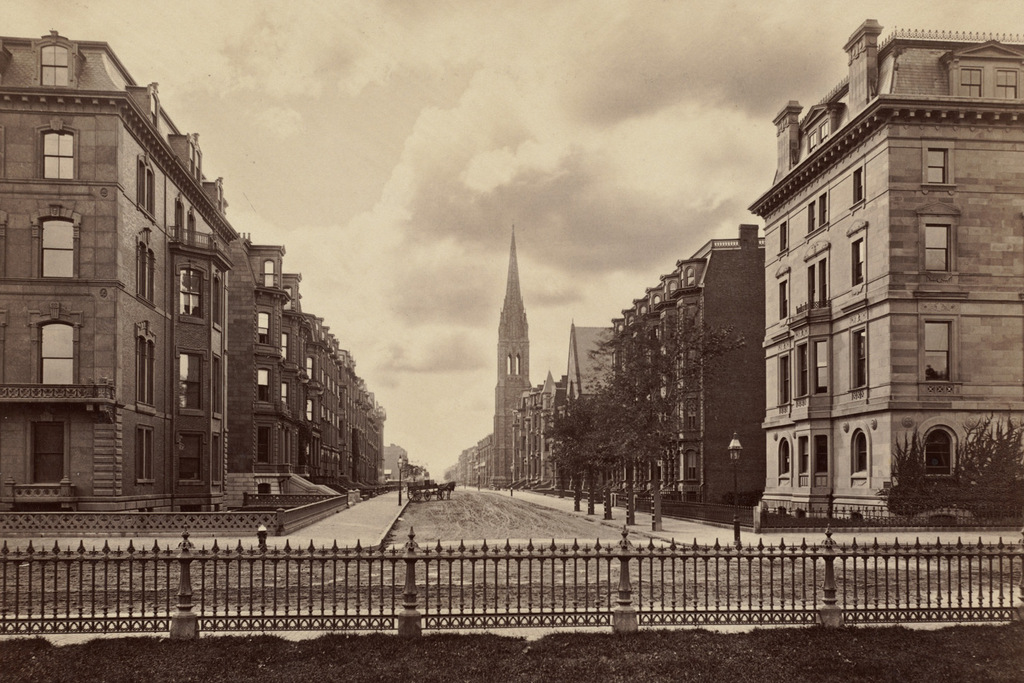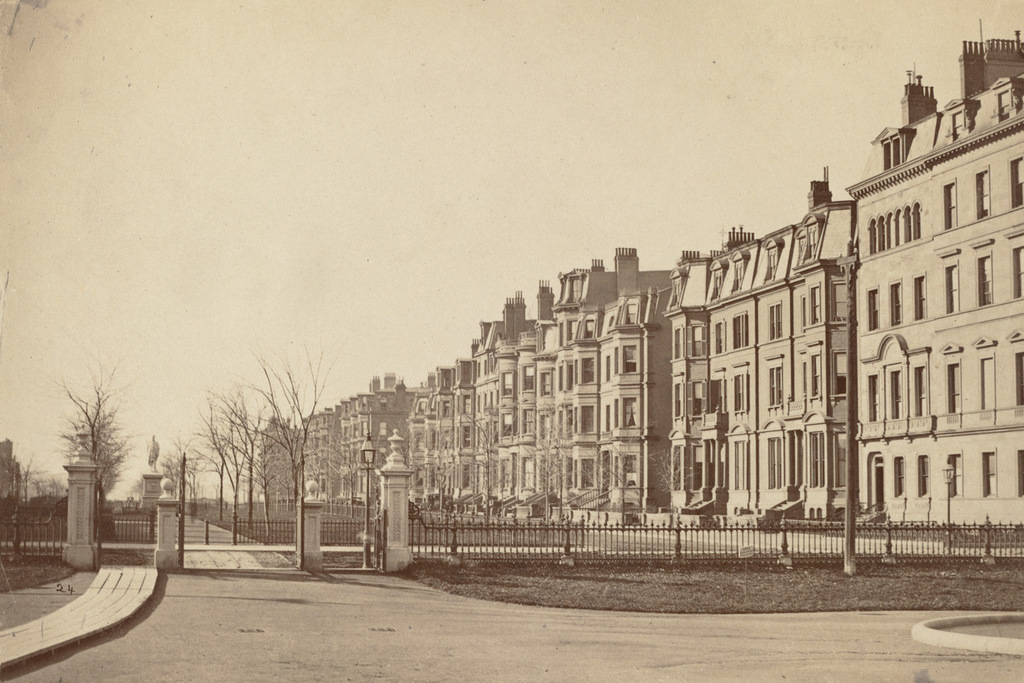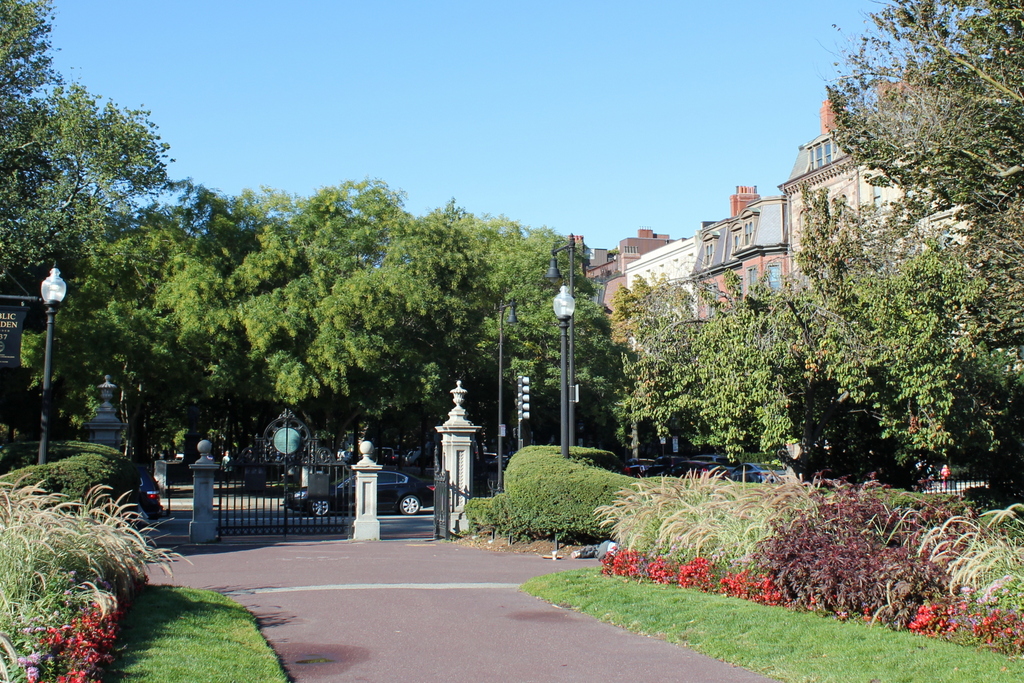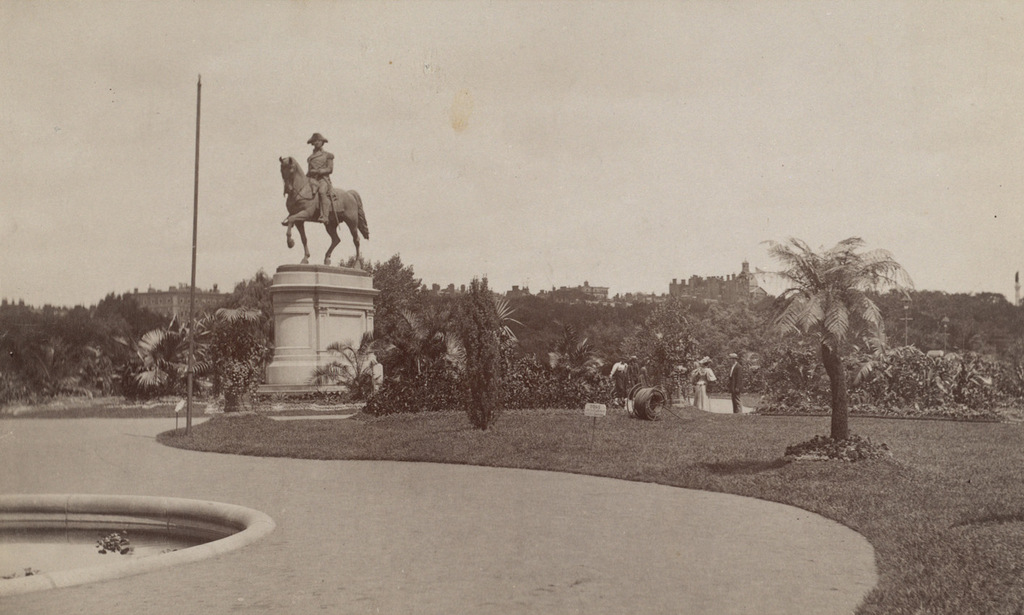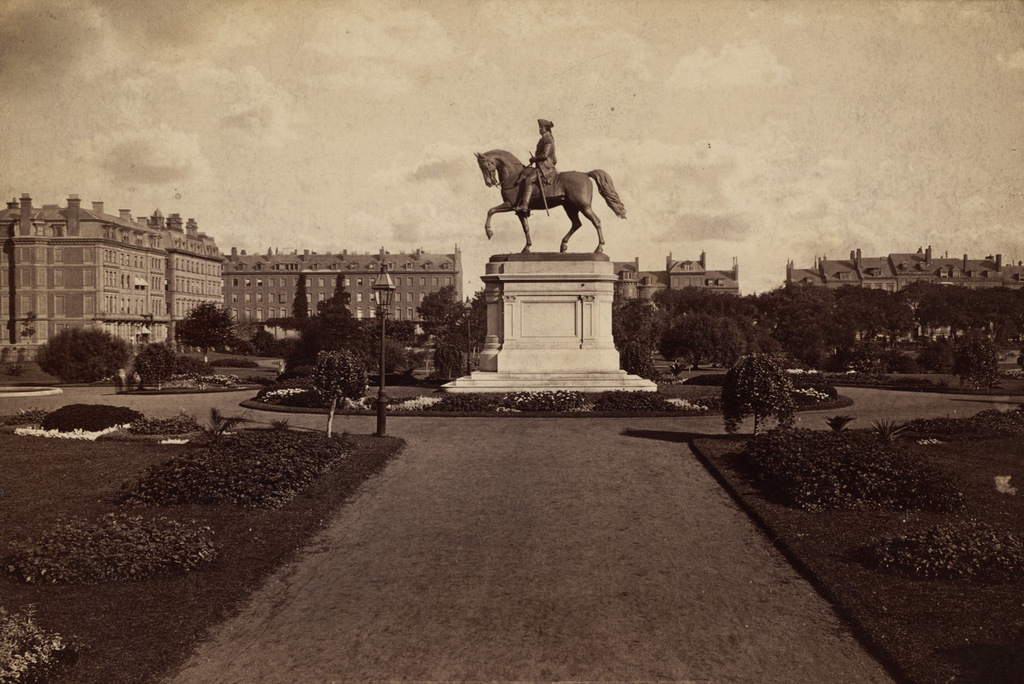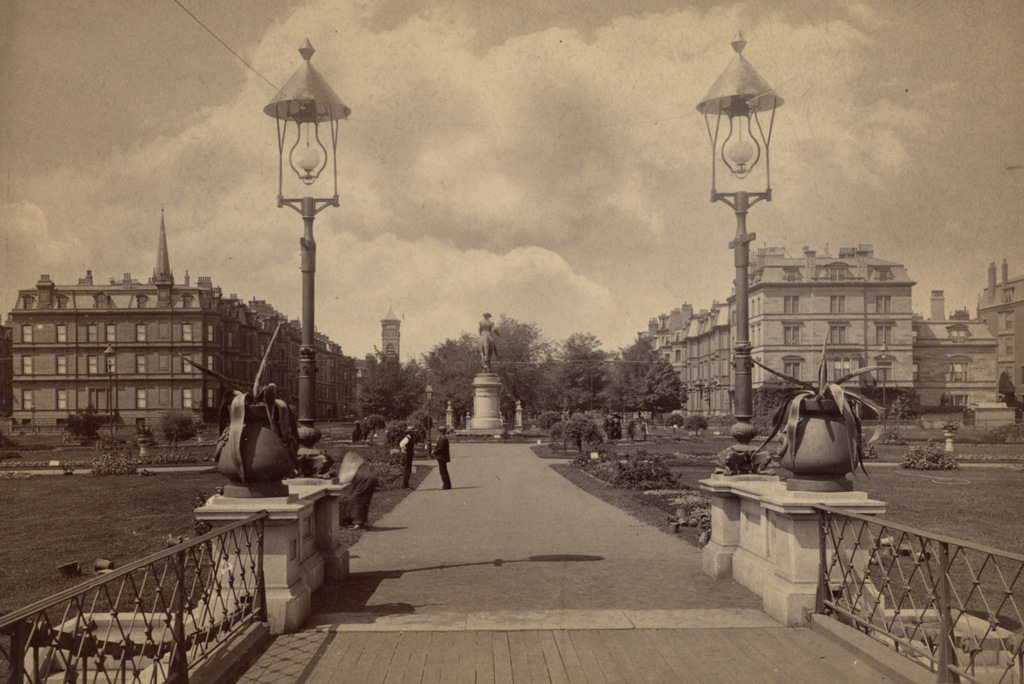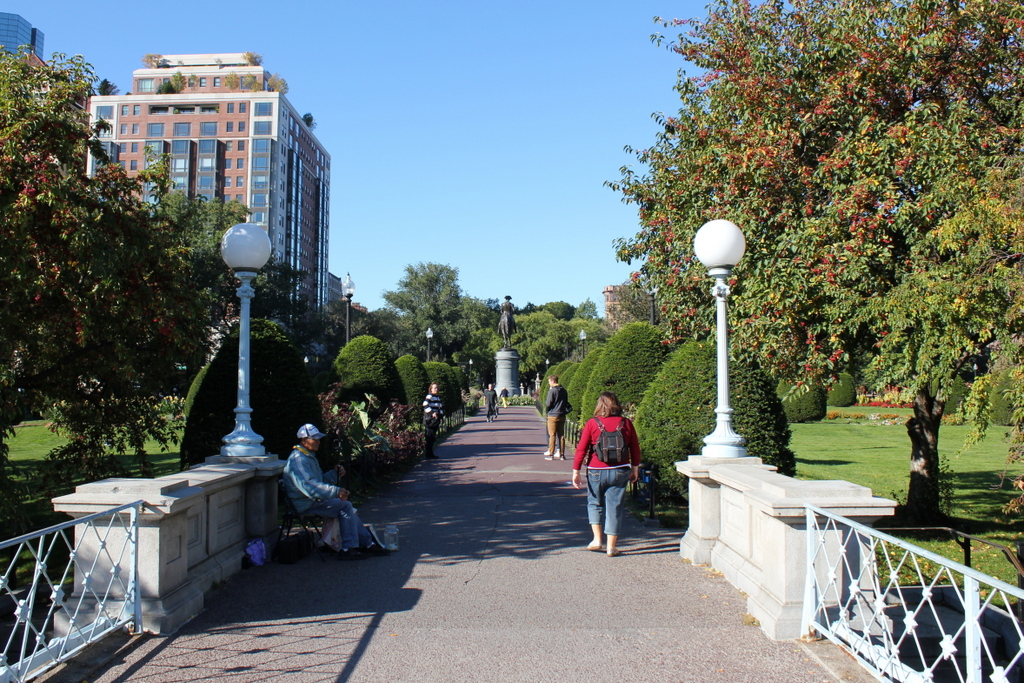Looking west on Newbury Street from Arlington Street in Boston, around 1880. Image courtesy of the Boston Public Library.
Newbury Street in 2015:
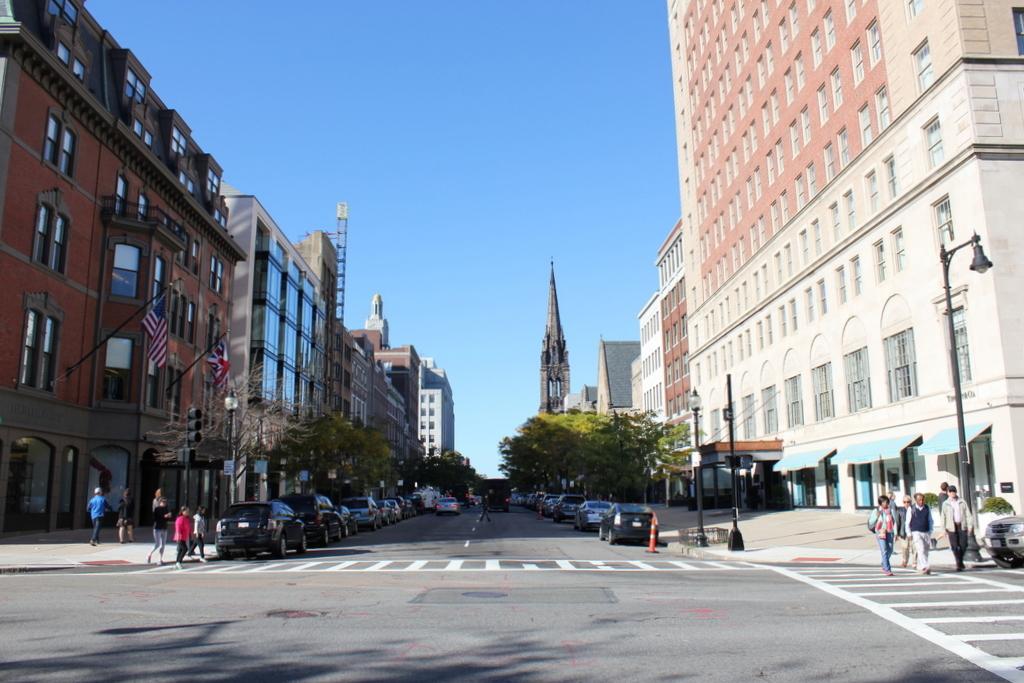
Like the rest of the Back Bay, Newbury Street was originally developed as an upscale residential street, starting in the early 1860s. The oldest building on the street is the Emmanuel Episcopal Church, which was completed in 1861 as one of the first of many churches that would eventually relocate to the Back Bay. It is partially visible on the right side, just to the right of the steeple of another historic church, the Central Congregational Church, which was built a block away at Berkeley Street in 1867.
Aside from these two churches, the rest of the buildings in the first photo are residential brownstones, similar to those found throughout the rest of the Back Bay. However, beginning in the early 1900s, the street began to transition into an upscale shopping district. Further down the street, many of the historic houses were converted into stores, but the Arlington Street end has seen some significant changes. This is generally where most of the high-end shops are located, and the 2015 photo includes companies like Burberry, Chanel, and Tiffany in the foreground. The Burberry building, located at the corner on the far left, is original from the first photo, and just beyond the Emmanuel Church there is a group of brownstones, but otherwise most of the other houses from the first photo have either been demolished or altered beyond recognition.

